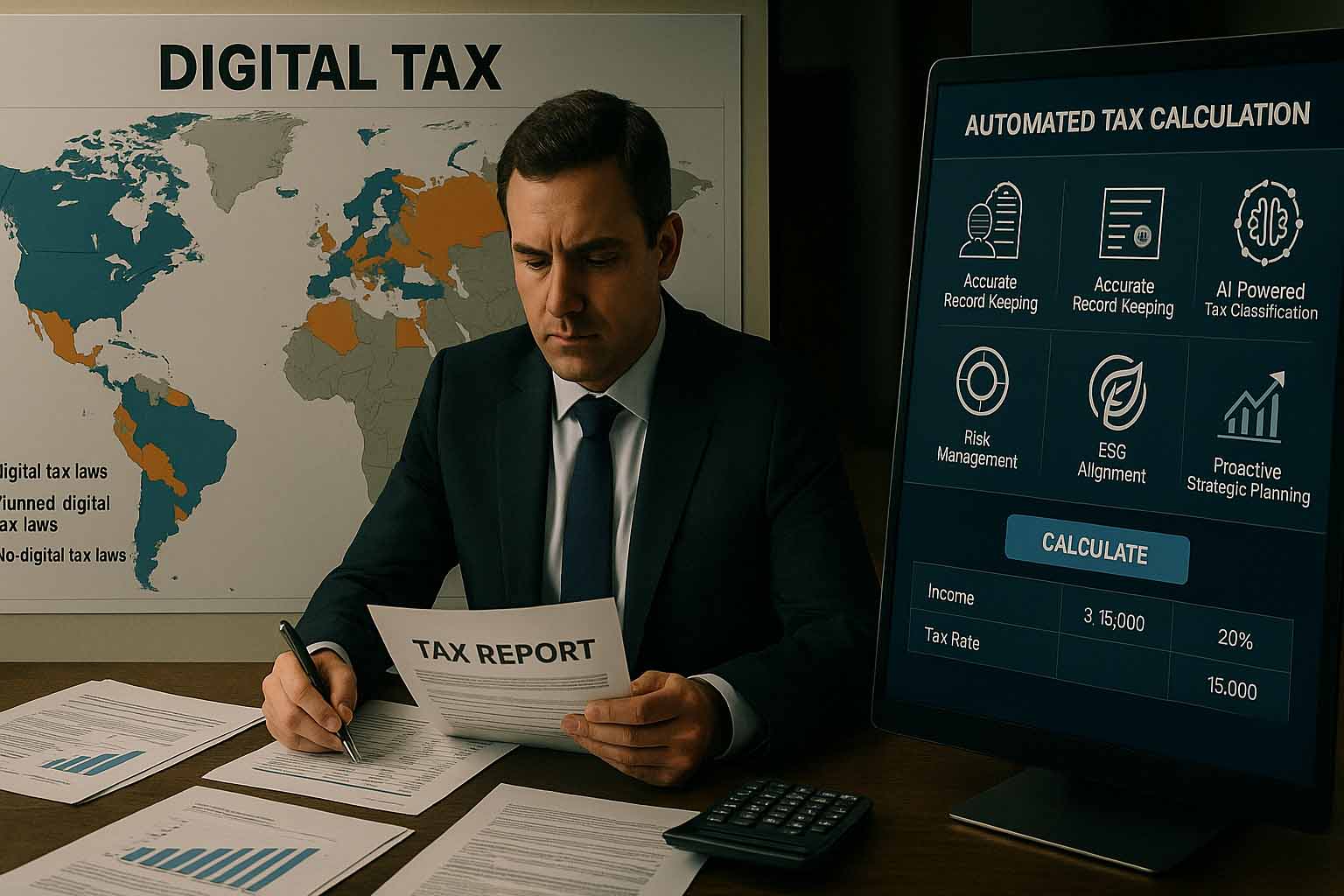
Taxing Digital Products and Services: What Global Businesses Need to Understand
In today’s hyper-connected environment, digital transactions span beyond national boundaries. As online services like streaming, cloud storage, and fintech applications grow, so does the complexity of international taxation. For business leaders, finance officers, and even early-stage founders, understanding digital tax compliance is no longer optional. It’s a critical requirement to remain operational and trusted.
Quick Overview
• Digital tax refers to tax collection from online transactions that cross jurisdictions.
• Countries are crafting their own rules—examples include the European Union’s VAT framework, India’s equalization levy, and Australia’s GST on foreign digital services.
• Compliance requires accurate records, reliable reporting workflows, and seamless technology integration for real-time data.
• This article covers regulatory foundations, common obstacles, and strategic steps to ensure readiness in a shifting global tax environment.
Global Expansion of Digital Tax Laws
In the past decade, online transactions operated in a largely undefined tax space. But as software-as-a-service, e-commerce, and digital content platforms grew, tax authorities recognized the erosion of traditional revenue bases. To address this, the Organisation for Economic Co-operation and Development (OECD) introduced two frameworks: Base Erosion and Profit Shifting (BEPS) Pillar One and Pillar Two. These aim to ensure that profits are taxed where economic value is generated.
Following these proposals, regional governments started rolling out their own measures. The European Union introduced clear rules on VAT for cross-border digital goods. India imposed a two-percent equalization levy. Indonesia, Kenya, and Mexico created versions adapted to their own markets. The United States applied the economic nexus concept under its sales tax rules—meaning that even without physical presence, a seller could be required to remit taxes if it meets certain thresholds.
The absence of uniform tax rates and thresholds poses a major challenge. Businesses need to determine exactly when and where taxes apply, or risk costly miscalculations.
Why It Matters to Global Organizations
Compliance with digital tax laws directly influences four core areas:
Margins and Pricing. An error in calculating VAT or GST could shrink profit margins without warning.
Public Trust. An audit revealing underpayment might result in viral media coverage, damaging the company’s image.
Market Access. Some jurisdictions can restrict digital services until tax obligations are fulfilled.
Funding Opportunities. Investors favor businesses with well-documented compliance processes because legal risks are lower.
Examples Across Key Markets
| Country / Region | Rate | Threshold | Key Feature |
|---|---|---|---|
| European Union | 15–27% VAT | Varies by buyer’s location | Destination-based; registration through VAT One-Stop Shop (OSS) required |
| Australia | 10% GST | AUD 75,000 annual turnover | Applies to subscriptions and downloads even without a local office |
| India | 2% Equalization Levy | No threshold for foreign providers | Deducted from gross revenue; separate from income tax |
| Kenya | 1.5% Digital Service Tax | KES 5 million annual income | Creditable against income tax at year-end |
Steps to Prepare for Tax Compliance
Each business has its own structure, but several steps are widely recommended to support a smooth compliance path:
Identify Customer Location
Use billing addresses and IP geolocation to determine which country’s tax laws apply.
Automate Tax Calculations
API-based tax engines help calculate applicable rates and collect necessary data with minimal manual effort.
Maintain Clear Records
Invoices should contain details such as timestamps, items, pricing, and buyer country. These details support audit readiness.
Stay Informed
Rates and rules shift regularly. Assign dedicated team members to monitor updates from international tax authorities.
Common Obstacles and How to Overcome Them
One frequent challenge is data fragmentation. When a company’s e-commerce platform, accounting system, and payment gateway operate independently, data gaps can occur. Combining systems into a unified data lake or using middleware helps ensure consistent records.
Another common hurdle is currency conversion. If sales occur in one currency and tax payments in another, accurate exchange rates must be applied on the correct transaction dates. A multi-currency ledger automates this process and reduces error.
How AI Supports Tax Classification
Modern automation platforms are integrating machine learning tools to enhance tax categorization. These tools can predict customer location, recognize the nature of digital goods or services, and apply the correct tax rate instantly. For example, if South Korea adds a new VAT requirement on e-books, updates can reflect on dashboards within hours and be pushed directly to production systems.
AI also plays a role in fraud detection. If suspicious spikes in user activity emerge from regions with lower tax rates, systems can flag the pattern. The finance team can then investigate further before it becomes a larger issue.
Risks of Non-Compliance
Failing to meet digital tax obligations leads to serious consequences:
Penalties. In some countries, like France, penalties can double the unpaid tax amount.
Interest Charges. These accumulate daily and can balloon the liability even when the base amount is minor.
Blacklisting. In Italy, authorities can suspend the operations of digital platforms found in significant breach of rules.
ESG Alignment and Financial Transparency
As environmental, social, and governance (ESG) criteria grow in prominence, so does the emphasis on transparent tax reporting. Investors and regulators alike scrutinize how companies contribute to national revenues. The Global Reporting Initiative (GRI) Standard 207 requires disclosure of regional tax contributions, reinforcing the value of accountability.
Organizations that proactively establish good reporting practices stand out. Being transparent with local tax contributions adds credibility and boosts investor confidence.
Looking Ahead
The OECD continues to refine the mechanisms for Pillar One, especially Amount A—designed to allocate part of a company’s profits to the country of the user, even if no physical branch exists there. Although technical details remain under discussion, finance teams are encouraged to model possible outcomes in preparation.
Meanwhile, more bilateral agreements are forming to prevent double taxation. Once ratified, these deals may require internal process adjustments. Adopting modular technology frameworks allows for quick adaptation when new policies take effect.
Staying Proactive with Strategic Compliance
Change in digital taxation is rapid, but that doesn’t mean businesses are helpless. With detailed record-keeping, the right tech stack, and continuous education on global regulations, companies can create strong foundations for reliable compliance.
The path forward involves embedding tax practices into daily operations—not as an afterthought, but as a consistent reflection of professionalism and organizational responsibility. Maintaining this approach helps build long-term resilience and trust in every market served.


No Comments